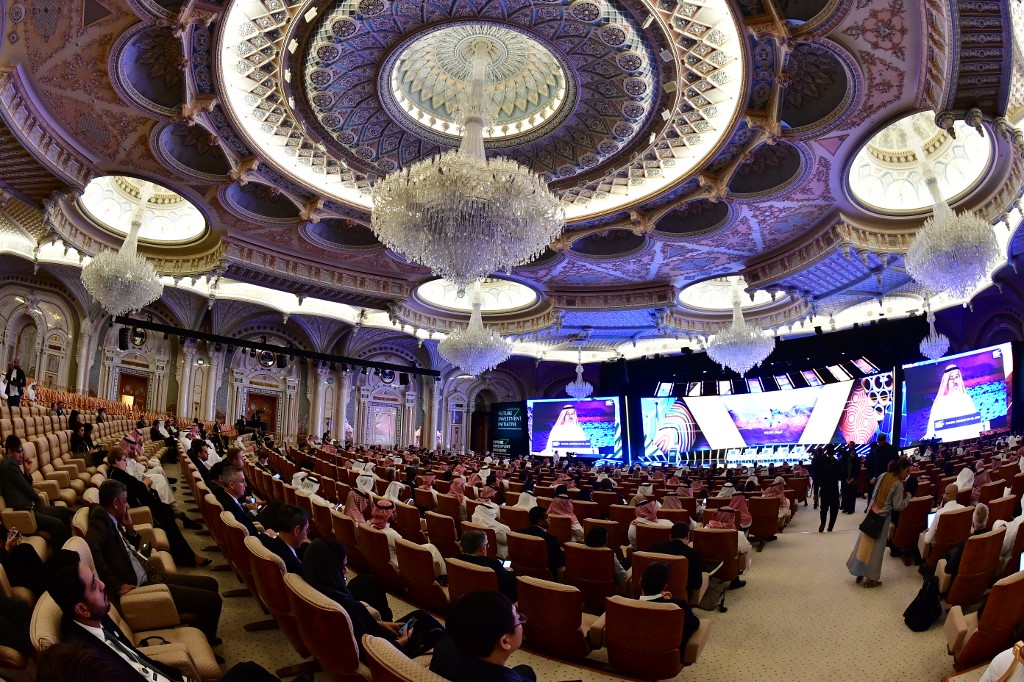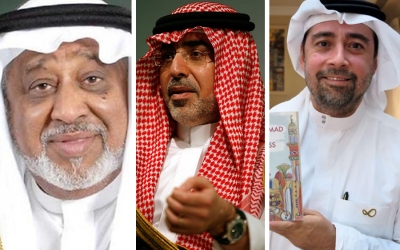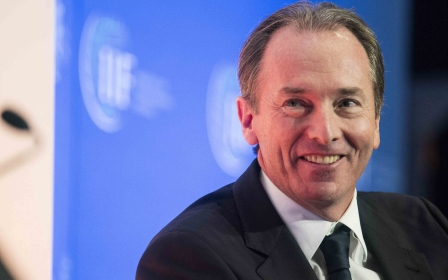Aramco bond sale: Investors back Saudi oil over Saudi government

At the beginning of April, Saudi Aramco, Saudi Arabia’s state-owned oil firm and the largest company in the world by revenue and profit, made an announcement that reverberated through international markets. Not only would the company be borrowing large sums internationally, it would also be opening its books and for the first time revealing its accounts to the public.
In a landmark deal brokered by Morgan Stanley and JP Morgan, Aramco is currently tapping international debt markets to raise around $12bn in capital.
The Aramco bond has produced a wave of debate and speculation that points to the future of international oil markets, the kingdom’s finances, and even the balance of power within Saudi Arabia itself.
Over the past six months, Saudi Arabia and its de facto ruler, Crown Prince Mohammed bin Salman, have attracted greater criticism than ever before after the murder of Washington Post and Middle East Eye columnist Jamal Khashoggi in the Saudi Arabian consulate in Istanbul last October. There was speculation that investors might walk away.
New MEE newsletter: Jerusalem Dispatch
Sign up to get the latest insights and analysis on Israel-Palestine, alongside Turkey Unpacked and other MEE newsletters
But when it comes to Saudi Arabia, money talks. Investors have flocked to the auction. By 9 April, Aramco’s $10bn debut bond sale had attracted around $100bn of interest from investors.
Markets are currently experiencing high demand for dollar bonds (in 2018, Qatar attracted $53bn for its $12bn bond sale), but the Aramco bond has proved more than just investor interest in Saudi oil.
The early indications of Aramco bond prices show that the company may be able to borrow from international markets at cheaper rates than those of the Saudi government itself.
A highly unusual state of affairs, that means investors appear to back the future of Saudi oil ahead of the future of the Saudi government itself, according to analysts.
On 1 April, a prospectus issued publicly for the first time by the company showed Aramco had made profits of $111bn in 2018 – more than five times the profits made by Exxon Mobil, the largest US oil company.
Sovereign wealth
Aramco was at the centre of controversy last year when the company announced that a planned initial public offering (IPO) of five percent of the company’s shares – a flagship privatisation policy of Mohammed bin Salman – was being indefinitely postponed.
They are aiming to raise the PIF’s assets to around $2 trillion, so this would replenish its assets for investment projects
- Garbis Iradian, Institute for International Finance
The consensus among analysts and observers is that Aramco is now raising capital ahead of its planned buyout of SABIC, which is among the world's largest petrochemical manufacturers. On 27 March, Aramco officials announced that they had signed an agreement to purchase a 70 percent stake in SABIC at a cost of $69bn.
However, SABIC is also owned by the Saudi state. That makes an Aramco purchase of SABIC a leveraged buy-out of one state-owned firm by another.
“Aramco does need the money to buy that stake in SABIC, but the money in return goes to the government’s sovereign wealth fund, the Public Investment Fund of Saudi Arabia (PIF),” said Garbis Iradian, chief economist for the Middle East and North Africa at the Institute of International Finance.
The Saudi government, and in particular Mohammed bin Salman, have placed great emphasis on a programme known as Vision 2030, a plan that purports to diversify the kingdom’s economy and reduce its reliance on oil sales.
“They are aiming to raise the PIF’s assets to around $2 trillion, so this would replenish its assets for investment projects at home and an eventual diversification away from oil,” Iradian told MEE.
The state-owned PIF, which is widely known to control all of Saudi Arabia’s banks, has been formally transformed by Mohammed bin Salman into a sovereign wealth fund under the control of the palace and is expected to play a major role in domestic infrastructure projects planned by the Saudi authorities.
Image problems
The second driver behind the Aramco bond has been a desire on the part of Saudi Arabia to plump up the kingdom’s image among international investors, according to Iradian.
Last August, Aramco cancelled its long-awaited IPO after receiving criticism over a lack of transparency about the company’s structure and finances, as well as debate over the $2 trillion valuation placed on the company by Mohammed bin Salman.
In January 2018, the kingdom had restructured Aramco to register it as a joint stock company in preparation for the IPO. Three months later, a glimpse of Aramco’s finances was leaked and reported by Bloomberg. The IPO ended up not going ahead.
Under Mohammed bin Salman, Saudi Arabia has been struggling to present itself as friendly to the interests of international capital. In March, the country joined the FTSE emerging markets index for the first time. This June, Saudi Arabia will also join the MSCI stock market index at emerging market status.
Ahead of the Aramco bond, investors on a roadshow were told that the money would not be used for the Sabic purchase, but would instead establish “a presence in the capital markets”.
Headlines highlighting an oversubscribed bond issue were a much needed boost for the Saudi authorities.
A Plan B?
On 9 January, Saudi Arabia’s energy minister Khalid al-Falih said in a news conference that the Aramco IPO has not been cancelled entirely, but would not happen until 2021.
That has prompted speculation among analysts that the Aramco bond issuance is a Plan B replacement for the faltered IPO, and for Mohammed bin Salman’s desire for closer ties with international finance.
Taking on international debt is a new development for Saudi Arabia, which until recently eschewed borrowing on international markets. In 2018, however GCC sovereigns including Saudi Arabia issued around $20bn in dollar denominated bonds.
In the past, Saudi Arabia borrowed almost exclusively from local banks, but the 2014 fall in oil prices appears to have shaken Saudi authorities said Rachel Ziemba, a fellow at the Centre for a New American Security and a specialist in emerging markets macroeconomics.
“I’m struck by the fact that Saudi Arabia is choosing an overweight focus on international bonds, and on one part of the capital structure – there seems to be a lot of trial and error going on here,” Ziemba told MEE.
However the kingdom’s new-found interest in debt appears to have come without an accompanying focus on other forms of opening up to international finance.
Both the Saudi government and now Aramco have chosen to take on international debts, but not to tap equity markets or encourage foreign direct investment. “If they were borrowing this much every year it would start to become quite problematic,” said Ziemba.
The cancelled Aramco IPO, and the Aramco bond may signal disagreements within Saudi Arabia’s ruling elite as to the direction the country’s economic development should take.
“The Aramco IPO was not a policy agenda that those managing Aramco were particularly excited by,” Ziemba told MEE.
“And it isn’t just about transparency. There’s a lot of central control, but there is also extensive debate about the path the country’s economic development should take.”
Middle East Eye delivers independent and unrivalled coverage and analysis of the Middle East, North Africa and beyond. To learn more about republishing this content and the associated fees, please fill out this form. More about MEE can be found here.






